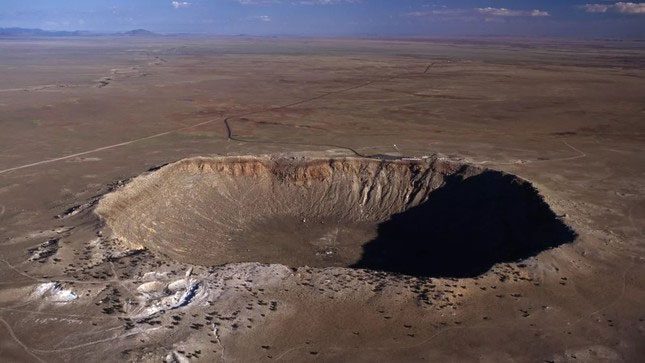A new study claims that giant meteors collide with Earth much more frequently than previously estimated. This finding is stirring controversy in the scientific community.
This contentious new research suggests that Earth may have been impacted by large meteors more often than previously thought, increasing the risk of extinction-level events occurring sooner than we believe.
The study was presented at the annual Lunar and Planetary Science Conference in The Woodlands, Texas, USA, last week. It focused on the largest known impact craters over millions of years.

The meteorite crater in Arizona is one of the best-preserved impact craters on Earth, estimated to be around 50,000 years old. A new study of larger, less pristine craters raises new questions about how many significant impacts Earth has experienced within a certain timeframe.
Using new high-resolution imagery, the authors argue that these craters were originally much larger than they are today. If they are correct, asteroids or comets larger than 1 kilometer have struck Earth dozens of times in just the past million years. This rate is significantly higher than the previous estimate of once every 600,000 to 700,000 years.
Impact craters on Earth disappear quickly
Unlike those on Mars or the Moon, impact craters on Earth tend to disappear relatively quickly due to erosion from water and wind.
Garvin and his colleagues utilized new high-resolution satellite data to examine the remnants of craters on Earth.
Using this method, the researchers discovered at least four impact craters with outer rings significantly larger than previously measured.
Specifically, the Pantasma crater in Nicaragua was previously estimated to have a diameter of 14 kilometers, but Garvin and his team found an outer ring with a diameter of 35.2 kilometers. The Bosumtwi crater in Ghana was estimated to be about 10.5 kilometers in diameter, but the new study indicates a ring-like structure measuring 26.8 kilometers. Additionally, the Zhamanshin crater in Kazakhstan, which measures 13.6 kilometers, could actually be 30.4 kilometers in diameter. The Iturralde crater in Bolivia has a width of 30.4 kilometers.
Garvin and his team state that the impacts creating these craters would release an equivalent of 400,000 to 730,000 megatons of TNT—enough to blow part of Earth’s atmosphere into space and scatter debris from the impact globally.


















































